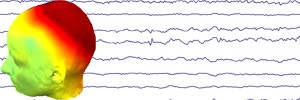Former projects
Agreement in Language Comprehension
In a series of studies, we are using ERPs and eye tracking to investigate factors impacting the processing of agreement dependencies during language comprehension. These include factors related to encoding and retrieval of agreement features, morphological realization of agreement features on targets, and attraction interference during real-time language processing. This set of studies involves monolingual English speakers, as well as second language learners and bilinguals.
Researchers: Tanner, Brehm, Armstrong, Christianson, Dempsey
Non-literal language comprehension and emoji processing
During normal language comprehension, we have to be able to understand both literal and non-literal expressions. The meaning of literal language expressions can be composed from the meanings of the individual words in the expression, but non-literal language — like idioms and metaphors — goes beyond what is explicitly said. In a series of experiments using ERPs and eye tracking, we are studying factors related to how we comprehend non-literal language, and how this relates to and compares with formulaic literal language processing. These studies investigate how formulaic expressions, like idioms and other collocates, are stored in the mental lexicon, how we predict words in formulaic expressions, and whether literal and non-literal formulaic sequences are accessed and predicted similarly. We are working on these issues in both native speakers and second language learners.
Moreover, sometimes verbal messages don’t just contain words, but meaningful ideograms, like emojis. We’re working on a series of ERP projects related to how language users incorporate meaning from emojis into context (e.g., sarcasm, contextual constraint).
Researchers: Bulkes, Weissman, Tanner
Information Retrieval in Native and Non-native Lexical Access
When we need to access a word during speech production or during reading, we need to activate multiple types of information associated with the word: e.g., the word’s conceptual representation and semantic meaning, the phonology of the word, as well as syntactic information about the word, including word category and in some languages grammatical gender. We are using ERPs to track the time course of how we access this lexical information during language production and language comprehension, in both native and second language learner populations. This line of research will inform models of lexical access in native and nonnatives populations. It will also inform language teaching practices as we identify how “mis-fires” within the time course of information retrieval feed into comprehension and production difficulties in non-native language use, and how different types of language training impact the time course of information retrieval.
Researchers: Shantz, Tanner, Dye, Montrul
